Green grow the rushes
BY DAN MAHONEY
Development
The oldest community garden in Worcester [Massachusetts] was started in the early 1970s by a group of dedicated grassroots organizers,” says Stacie Brimmage ’08. That same grassroots spirit took hold of the population in the early nineties after the town decided to put a landfill at the base of one of the city’s largest and most beloved parks, Green Hill Park. The grassroots opposition called themselves the Regional Environmental Council (REC). The REC were unsuccessful in their attempts to stop the city from building the landfill, but they were successful in organizing concerned citizens to act and, in doing so, the REC became a permanent fixture in the Worcester landscape. According to their website, the mission of the REC is to bring people together “to create a just food system” and “to build healthy, sustainable, and equitable communities” in Worcester and beyond. Their core programs are: UGROW (Urban Gardening Resources of Worcester), which supports community gardens and 60+ onsite/school gardens; YouthGROW, which provides personal, professional, and economic development to Worcester youth through urban agriculture; and farmers’ markets which bring fresh produce to people through mobile and standing community markets. The REC lost the landfill battle but never gave up on the fight for justice in the community.
“When I was at COA I was really interested in education and farming. I did a tutorial with Bonnie [COA professor Bonnie Tai] doing education work at COA Beech Hill Farm. I then did an internship at the farm where we worked with student groups from all over the area giving them hands-on experiences working with the soil.” These experiences crystallized how Brimmage wanted to engage with education in the future. “When I returned to Worcester, I knew I wanted to work with young people and education and farming.” She quickly got a job as a youth mentor with the YouthGROW program—a program she now coordinates. “It was sort of like a camp counselor position but I was able to lead team projects and work with young people on the farm, so it was perfect for me.” Eventually, REC was awarded full-time AmeriCorp positions, and Brimmage was hired as the school gardens AmeriCorps volunteer to develop and expand the school gardens project in partnership with Worcester public schools. “We have a network of over 60 community gardens and just over 20 of those are school gardens. We are definitely heading in the right direction.”

Now that the REC and its programs are part of the landscape of Worcester, the struggle has shifted, but it remains a struggle. According to Brimmage, “We constantly need to advocate for this funding. Every year we meet up with folks from all over the state and march to the State House to lobby for youth jobs and to talk to our congressional representatives about the impact and significance of youth opportunities in our community. Our local representatives have been really supportive. But this is something we do all the time. We need to make sure that all of our programs are at least level funded in the state budget.”
I agree with Brimmage that Worcester is “heading in the right direction,” but exactly halfway into our conversation, she utters the word “development.” Development can be an explosive term when talking about community building and food-justice programs within cities and towns. “So many things are changing now because of all the development in the city. Worcester is on the map because people can’t afford to live in Boston anymore.” When I hear this I get that sinking feeling in my stomach.
Development. The most common definitions of the word involve terms like “advancement,” “buildings,” and “using resources” by “repurposing land.” In the latter half of the twentieth century, dialogues concerning the built and natural environments have often been at odds. Town governments and business leaders often look to construction aspects of development as ways to improve their communities: more buildings, more jobs, larger tax bases, more services, and we all come out ahead. Local environmental organizations call out the need to develop green spaces that benefit the people living in those communities; they often favor more urban gardens, healthy-eating partnerships, local farming, youth programming, and the blossoming of strong community bonds through land use. In the early part of the twenty-first century, these discussions are still a work in progress.
COA mag | SPRING 2021 28
“With the pandemic, all of our programs have seen a huge uptick, for sure. You have a lot of people stuck at home and they are thinking of ways to occupy their time. Starting a garden is perfect! There were also the early shortages at grocery stores and that got people motivated to start sooner rather than later,” says Brimmage. “Our UGROW network created a whole resource page on our website to help facilitate folks getting the resources they needed.” The webpage includes everything from how-tos on container gardening, building raised beds, soil choices, and transplanting seedlings, to guidance on Worcester’s free compost programs and information on Soul Fire Farm and Soul Fire’s links to BIPOCled gardening projects throughout the country. As Brimmage notes, “information is power.”

Under ordinary circumstances, YouthGROW coordinates 40 youth gardeners working in two different garden sites in the city. YouthGROW plans out how summers will work over the course of the winter and ramps up in spring. Brimmage remembers, “we just had our March meeting… at the end of the week the REC office completely closed down. I contacted our youth to let them know the office was closed and we didn’t know when we would reopen. It was a back-and-forth process trying to figure out how we’d run our summer program. Eventually our local community action council—the one that manages our state funding—mandated that all YouthWorks sites needed to be virtual to limit face-to-face contact. In the end, YouthGROW decided to have only the junior staff and youth leaders tend the gardens. “All of our junior staff were seniors… they had already lost so much [prom, graduation], we were committed to providing them with some semblance of a typical YouthGROW summer. We decided that REC would fund their employment and everyone else would be virtual and get paid through YouthWorks state funding.”
“Virtual farming” may sound like an oxymoron, something you do while tending your Sims world, but the REC crew created something amazing. “We went forward with our annual Spring Gardening Festival and Plant Sale, which was super successful. We did it all by preorder, so folks would just drive up, tell us their order number, and we just put the plants in their trunks and they drove away.” YouthGROW was able to do this with the minimum number of senior
staff, but I wondered about all of the other young people who were unable to work in the gardens. What about their summer experience?
“We had a team of 12 working in the gardens and we were able to set up our other youth farmers with container gardens or supplies to make raised beds if they had space at their houses, so they could practice growing,” states Brimmage. “We grow corn, eggplant, kale, Swiss chard, broccoli, green peppers… we also grow crops specific to Puerto Rican cooking—ají dulce, cilantro, and gandules—because there is a large Puerto Rican population in Worcester. As soon as Brimmage says the word “gandules,” I get heartsick. I lived in western Massachusetts for a number of years and discovered several amazing Puerto Rican markets and restaurants in Holyoke that added new flavors to my vocabulary: pernil con arroz y gandules, tostones, mofongo, and papas rellenas. I miss that food and the friendly people who made and served that food.
According to Brimmage, another aspect of YouthGROW work that COVID-19 affected was the Farm to Your Table Fall Fundraiser. “It’s a great annual event. Folks will come down to the farm, get tours, have food and drinks, hang out, and get to know their community a bit better. This year we did a virtual farm event where we assembled boxes of produce for people to pick up and take back to their homes. We then digitally streamed a local chef from a Puerto Rican restaurant making homemade sofrito with the ingredients from the box so people could follow along and make the dish at home. It was a really cool partnership.”
And after the pandemic recedes, does Brimmage think folks will abandon their home gardens? “People are going to keep growing. Our community gardens have always been active and that will continue. We have a fast-growing list of people wanting to join our garden projects. We always have community members reaching out to us about spaces in their neighborhoods to grow. It seems like people are becoming more aware of our current food system and how farmers are exploited, and how large food processing plants have exploited their workers during this pandemic. When people pay attention to those types of things, it adds up and motivates them to keep growing.”
SPRING 2021 | COA mag 29
When
the R-E-C met C-O-V-I-D






















who has access
Käthe Kollwitz was a way…
For my senior project at COA, I studied pregnant women in Nepal who were HIV positive. The only public maternal hospital in the entire country is in Kathmandu. Before I left COA for the study, I remember Ms. Netta [anthropology professor Netta van Vliet] saying to me, “Porcia, you’re just a fly on the wall. Sit in the corner, observe, and write it all down.” That’s what I did; I wrote down every single thing and I was awake until 2 am writing descriptions of what I saw. This was sometimes graphic, a miscarriage—in the ER there were two women who were literally leaking because their water broke and they were delayed in being attended to due to heavily occupied nurses and doctors. There was just so much.
I wanted to tell people what things were, how things are outside of this wonderful bubble of being in a high-income country where there is a lot of privilege—even me as a local person from
Can you pause this?
I was doing assessments of birthing centers in rural Nepal where my [current] field site is—it’s a place called Sarlahi in the rural southern part of the country where one of the oldest research sites that Hopkins utilizes is located. They have been there since 1988. It was one of the first places where they did a large-scale vitamin A trial. It was huge, thousands of kids were involved and they found that there was a 30% reduction in mortality when these young people were given vitamin A. Eventually, after subsequent studies, it became an official World Health Organization (WHO) recommendation.
It’s funny, when I was growing up in Nepal, I got those vitamin A capsules at the same time I got my polio vaccination. When I came to Hopkins I had no idea how much they were involved with the Nepalese government. It turns out my academic advisor was in her early twenties when she joined the vitamin A project in Nepal, and now here we both are at Hopkins.
The WHO is there to provide top-class recommendations from scientists, but the country needs to have both the economic and political means to do something with these recommendations. Let’s say country Z is a tourist destination, but country Z also has an active cholera outbreak. If tourists hear the word cholera they automatically think the country has dirty water and poor sanitation. Because of this, the outbreak might not get reported. Or let’s say it gets reported, and the non-governmental organizations in the area are able to send help in the form of vaccines. If country Z’s government doesn’t have the infrastructure to do mass vaccinations, the vaccines will just sit at the airport.
Another example is HPV vaccinations, which are routine for young teenagers and adults in the US—even though there is a lot of vaccine hesitancy in this country. But when I was in Nepal,
Kathmandu to do this research—but I struggled with how to make people understand the problem, the suffering. How could I bring them into those rooms?
The written part of my senior project* was one way, but I wanted a pictorial version so that people could be part of that interplay, like how a virus moves from human to human… the inescapable intimacy of that moment. Visual art is a different kind of dialogue. Ms. Catherine [art professor Catherine Clinger] showed me the work of Käthe Kollwitz and it made sense… how Kollwitz (German painter, printmaker, sculptor, 1867–1945) was a witness of such suffering.
about to turn 25, I thought that I should get my HPV vaccination. In order to do that I had to go to the tourist hospital, which is fancy and big, and I walked in and asked, “Do you guys give the HPV vaccine?” and the nurse brought me to a room, closed the door and said, “Are you married?” “No, I’m not married.” It was so frustrating, the lack of messaging about this. In Nepal, only married women can get an HPV vaccination, and they are required to pay out of pocket.
Public health in Nepal used to be run through the central government in Kathmandu. Kathmandu decided on the health needs of the country. They’ve just changed over to a federalized system where each province is now autonomous, but because this system is so new, no one is sure who to ask for what. There are great benefits to a federalized system but while all of this is being reorganized, you cannot just tell a woman in labor, “Can you pause this? I just need to figure out a couple of things before we go any further.”
Local control allows each province to determine its own needs. A province can say “we don’t need any more vitamin X but we need vitamin Y.” Not all population groups are comparable and it makes sense to have localized control. But for large scale operations like countrywide vaccinations, these things need to happen regardless of disagreements or chaos in a particular area. You need to have a centralized response in order to reach everyone.
When it comes to public health, your rights are national rights—universal rights— not conditioned upon the politics of your local or regional office.
COA mag | SPRING 2021 32
*Manandhar created a series of intaglio prints as a part of her senior project entitled, Virus, Human, and Power. Images can be found here: coa.edu/porciamanandhar
$5 a dose
I am in the Department of International Health at Johns Hopkins School of Public Health. We work mostly with low- to middle-income countries (LMICs). Under the larger department, there are four sub-programs, and I am in the Global Disease Epidemiology and Control program. Amy [Wesolowski ’10] is in the Department of Epidemiology. It gets confusing. I met Amy years ago at a dinner at [COA professor] Dave Feldman’s house—we both had longer hair back then. I did not know if she was at Stanford or Hopkins until one day I ran into her at the coffee shop! We had the same advisor at COA, took mostly the same classes, and we both ended up at Hopkins. We both talk about COA a lot. Sometimes we will be in the same meeting and Amy will say, “You know that Porcia went to the same weird college that I went to, the one none of you believe exists.”
The School of Public Health reminds me so much of COA, I don’t feel very different in how I interact with faculty and other students. It’s been so great. It reminds me of being at JAX [Bar Harbor’s Jackson Laboratory], which was such an inspiration to me because there were people from all walks of life, people from many, many different countries doing some deep, ground-breaking thinking on the island.
When I was at COA I had some amazing friends come and visit my home in Nepal. And I remember some asking if they really needed to get vaccinated against Japanese encephalitis [and I told them yes]. You do not need this vaccination in the US because JE is more common in other places than in the US, just like if you were to go to South Sudan you would want to get vaccinated against yellow fever. In the US, getting some of these shots is as easy as going to Walgreens; it’s not so easy in other parts of the world. Most of the health posts I work with are single-floor buildings with four rooms or less. That’s it. Those four rooms are used for delivering babies, postnatal care, vaccine delivery, treating patients for diarrhea and vomiting, and everything else you can think of.
Both the Pfizer and Moderna vaccines have synthetic mRNA components [as of this writing both vaccines have been approved by the FDA]. The one obstacle with the COVID-19 vaccine from Pfizer is that it requires ultra cold chain storage. The Moderna one also requires cold chain storage, but not as extreme as the Pfizer vaccine. How do you keep that cold chain intact if you are transporting the vaccine to, let’s say, Nepal? Getting it to the airport is one thing but then how do you get the vaccine into the rural, low-resource settings? When I was at the field site in Nepal on vaccination days, I would arrive at the health post in the morning and find nurses waiting for a person to come from the district headquarters on his motorbike. He
usually had a cooler and inside that a plastic bag with these little vials, and that was it. So, again, there is a lot to consider.
The Oxford-AstraZeneca vaccine is an adenovirusvectored vaccine and the cold chain is not as extreme. That vaccine is being talked about as being mostly for poorer countries. It is about $5 a dose, which is doable. And this is where the WHO and GAVI [the Global Vaccine Alliance] are really important. GAVI gets enough funding for LMICs to get vaccines for free. LMICs get their routine vaccines, especially childhood vaccines, through GAVI and the WHO. There are three general economic tiers we talk about in public health: there’s high-income, middle-income, and low-income countries as categorized by the World Bank. The middle-income country designation is growing. You have countries like India, Ghana, and Nigeria. Lebanon is another one. The gross national income in these countries is higher relative to LMICs, so they graduate from the low- to middle-income category. On paper they are doing well, so GAVI comes in and says, “Now that you are wealthier you should be able to afford vaccines on your own.” Such graduating countries are then given some grace period to transition and this allows GAVI to devote more resources to comparatively poorer countries. But these middle-income countries, in absence of proper planning and budgeting, can get stuck with a bill they did not foresee. For the past two decades, for instance, they’ve been relying on GAVI to help them get these vaccines, and now they are expected to pay for them going forward.
These three [COVID-19] vaccines are amazing when you think about it, so technologically and biomedically advanced. But they still need to be tested. The science needs to be replicated and the data checked and rechecked and proven safe and effective. Science and public health are about solving problems for the greater good, not about trying to make a profit.
I was reading this New York Times article about the couple that started BioNTech. They are Turkish immigrants living in Germany. This couple [Ugur Sahin and Özlem Türeci] said they started working on a vaccine because it was their duty as scientists. They then partnered with Pfizer for development and now their company is worth billions of dollars, but they still ride their bicycles to work and they don’t own a car. And this is a Turkish couple living in Germany where recently there has been unrest about immigration.
I sent the article to my advisor and she said something like, “I’m really proud to be an immigrant, and you should be too.” That’s all.
SPRING 2021 | COA mag 33 SPRING 33
Porcia Manandhar is a doctoral candidate at the Johns Hopkins Bloomberg School of Public Health studying infectious disease epidemiology and vaccine science and policy. When not working or teaching herself to knit, she can be found perfecting her savory tofu recipe in her kitchen in Baltimore, Maryland.














































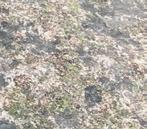





Is there anything you feel you want to say, right up front, about race, racial justice, and whiteness at COA?
BONNIE TAI (BT): Although I probably have more to say about gender at COA than about race, I’ve been the only full-time US woman of color on the faculty since I started here 20 years ago. That’s very much shaped how I’ve thought about these issues. I also want to note that my experiences of white supremacy as an Asian American are quantitatively and qualitatively different from those of other BIPOC, a difference that is rarely if ever explicitly acknowledged at COA. In my time here, the student body has become more diverse. One out of four students are international; one-sixth are students of color; one-sixth are first generation college students; many more receive financial aid than used to be the case. But the faculty has not gotten much more diverse.
How has this lack of faculty diversity played out in my experience? Here’s just one example: one year, a commencement raised a lot of faculty voices about how it was all older white men on the dais. A year later, I was asked to be faculty marshal. When I asked what that involved, I was told it essentially meant being in the front of the procession. I asked, Does this have anything to do with the conversations and criticisms about who was on the dais last year? The response did not convince me that my visible racial and gender difference from the majority of my peers was not the primary motivation for the invitation to serve in this symbolic role. I remember responding: Until the faculty reflects at least the diversity of the students, I don’t want to be the token woman of color: it’s a superficial, meaningless, and dishonest act. The honorific had nothing to do with what I contribute to the faculty. So I declined.
I understand the pragmatism behind short-term, simplistic solutions like this attempt to present a more diverse face of COA at one of our most public events, but they also reflect the depth of unawareness around some of these issues.
CATHERINE CLINGER (CC): When I came for my initial interview at COA before I was hired, I wasn’t familiar with Maine. I’d come from Montreal and London, and had spent most of my life in New Mexico. So I was very surprised by what I saw as a room of “glowing white heads” which were the faculty. I almost didn’t take the position, because I wondered how the dynamics would play out in a place where the faculty did not appear to reflect the student body. How could students find themselves? The students want to understand history and continuity in their studies, but they also want to be current.
What does white supremacy look like at COA?
BT: A lot of it is tacit. There are assumptions about norms, standards, ways to truth, and the meritocracy: who deserves awards, praise, compensation, opportunities, etc. For example, there is a tacit hierarchy about what kinds of self-presentation we value over others. A masculinist, individualist, near-narcissistic self-promotional presentation in intellectual debate and discourse reaps greater rewards (talk time, hiring, promotion) than self-presentation more common in collectivist cultures that value humility, interdependence, and the elevation of others. And it’s difficult to talk about white supremacy without talking about how it intersects with language dominance and monolingualism, ability, citizenship, gender, sexuality, and so forth.
White supremacy also manifests itself in what gets taught in the curriculum: whose words are valued, validated, magnified; whose stories get told.
These are all implicit moments that we mostly don’t examine closely or systematically. And the questions these moments raise are ethical questions. If we don’t yet have a level of self-awareness about the roots of our assumptions about what merits acknowledgment, recognition, rewards, and celebration, it’s very hard to meet our basic ethical obligations as teachers to respond to the needs of all students equally and equitably.

REUBEN HUDSON (RH): Unfortunately, I see white supremacy enacted all the time in chemistry teaching, including my own, because a lot of the fundamental things that we teach early in chemistry are from white European dudes. The very ideas that form the literal basis of chemistry, such as electrons, were discovered by a French guy, a German guy. It’s an incessant march of white guys. Contemporary chemistry involves all sorts of different people, but we can’t always get to those in introductory chemistry courses, which means I have to leave more diverse sources out of the curriculum early on.
Beyond my specific discipline, I see how there are standards or expectations that we hold students to which are baked into white culture but not shared by other cultures. We operate on this false and white supremacist premise that our students all come in with the same bodies of knowledge or norms. And then we wonder why all students aren’t equally engaged.
JODI BAKER (JB): It looks much the same here as it does at other small liberal arts institutions in America. The value of these institutions is measured, at least in part, by exclusivity. Who has access, who we’re built to serve, who and how we exclude—this is really at the core of who we are. For better and worse, we tend to think of COA as pretty special. We have an extraordinary history, unique mission, innovative curriculum—all very cool. But this can feed a false sense of exceptionalism. It’s easy to assume that we are so interesting, so radical, so well intentioned that we are somehow outside or beyond this problem. And of course, we are not. We’re cut from the same fabric, married to many of the same academic traditions, steeped in some undeniably racist and classist foundational principles—just like everybody else.
CC:
We are a relatively young school, and the mythology of our founding is still really potent. But that potency can be a negative, because the world is not the same place it was when the school was founded—and frankly, even back in the heyday of the counterculture that helped started this place, it was not a great place for those other than white males.
JB:
Honestly interrogating why a place like this remains tied in any way to these principles and structures seems important. I don’t think anybody at COA is eager to bolster or maintain the fundamentally racist and classist norms of higher education, but none of us have been trying hard enough to dismantle them either.
What do you think are some ways of remedying those problems?
CC: We’re notvery good at looking at other models becausewe always want to self-generate. We have such a sense of ourselves as an iconoclastic institution that we think we can’t borrow from other models. I’ve been confused by why we don’t look at existing ways of re-looking, at other ways of acting. Why don’t we investigate those and explore them together? There are other wisdoms. I tell my students that all the time.
JB:
I think we need practice. By this I mean we need to develop a collective practice of engaging with these topics honestly and openly. Practice taking active risks, acknowledging our mistakes, apologizing, and trying again. I think that’s especially hard at COA. We are a pretty intense group—hyper-intelligent, passionate thinkers who care deeply about social issues and injustice. The fear of “doing it wrong” can be paralyzing here both institutionally and personally. Offering up the space to consider the nature and scope of this work critically , without a narrow agenda, without constant correction, without prescribed outcomes and with many different voices in the room—this would be a great start. Resisting skepticism,cynicism (not my strong suit), and trusting that we are all actually capable of participating responsibly and effectively in this dialogue and in this work would also be useful. We will undoubtedly disagree but I hope we’re not so conflict averse that we seek out only the most bland, palatable, incremental revisions.

COA mag | SPRING 2021 38





What do you feel most despondent or frustrated by in terms of how white supremacy manifests at COA?
RH: Recently, I was trying to write a grant to better recruit and retain underrepresented students in STEM areas, from funders who only fund US citizens. I was trying to get the data on registration for American BIPOC in our introductory STEM classes, and to chart that through intermediate and advanced classes, to see if we lose American BIPOC students as we move up in the sciences, to see if the pipeline is leaking and if we have a recruitment or retainment issue. But frankly, there just aren’t enough American BIPOC students on campus and in these courses to get any meaningful statistics—we’re only talking about a handful of total students. And that’s sad to me.
BT: At COA, we tendto seeourselves as non-hierarchical and egalitarian but that view canoftencompletely disregard systemic inequalities within and outside of COA, and how those inequalities impact our internal structures, policies, and processes, and ultimately students’ opportunities to succeed at COA—academically, socially, and professionally.
For example, language itself is a signifier of national origin, citizenship, socioeconomic status, cultural class, race or ethnicity, educational access, etc. If as a teacher your sole or primary means of evaluating student learning is through verbal or written means, and your evaluation of student learning privileges these English language-focused skills above other valid assessments, you deny or ignore the historic and systemic inequities, not to mention cultural differences that contribute to howyou interpret and evaluate students’ language and communication skills. There is substantial documentation of how public K-12 schools in the US, as one specific example, systematically disadvantage students in underfunded school districts through inequitable school finance policies impacted by discriminatory employment and housing practices. Feedback and evaluation practices that overemphasize the evaluation of writing and spoken presentation skills fail to document and celebrate student learning and growth, and unfairly penalize students based on their diverse secondary school experiences. As Katarina Tomasevski writes in Education Denied, education is a multiplier of human rights. And, by extension, the denial of the right to education is a multiplier
of the denial of human rights. Perhaps more frustrating than that is the lack of humility that comes with externalized and internalized white supremacy. Under what conditions are we open to learning from those we have been conditioned to believe are inferior to us—whether due to their age, gender or sexual identity, educational background, class, language proficiency, race, ethnicity, or national origin?
CC:
Our challenge is to depart from our attachment to a “common identity” and value system. Someone will say that a new idea “doesn’t really represent the values of the college.” But what does that mean? We don’t share a common understanding even of that concept. Those are the discussions where we have to look at the structures in place, see the flaws. We must be willing to call into question the efficacy of the paradigms in which we’re operating.
What do you feel most hopeful about in terms of COA’s ability to make significant changes or progress?
RH: Our students are very much included in our decision-making processes and governance, and, to my mind, dismantling white supremacy is something that the students want. In Academic Affairs meetings, it’s often the students who first notice that a course proposal has only white people on its reading list, for example, and call that out. We tend to be more responsive to student input and desires than other institutions are. We can follow our mission to listen to the students and respond to their needs.
BT: Many of our community members value and practice humility. Part of practicing humility is acknowledging that the lines that divide us at COA are also many of the lines that divide the citizens and residents of the US and across the planet. Many of us recognize that replacing white supremacy with the recognition and celebration of the humanity of all people, regardless of race and color and other weaponized differences, requires moving the needle not just at COA but also beyond. This movement starts but does not end with ourselves.
CC:
I’ve witnessed a greater attention being given to all the tiny things that one needs to consider, including process and procedure, which can seem ridiculous but are really important.

SPRING 2021 | COA mag 43



















































Where are you from?
I grew up in Massachusetts. When I’m writing, I often return in my mind to the landscape of my childhood—the stone walls and small farms, the quiet drama of the seasons, the smell of the earth emerging from under melting spring snow. The properties of that landscape are inextricable from my early memories of being alive.

What made you choose College of the Atlantic? Were you glad you did?
I loved my time at College of the Atlantic. I came thinking I would become a scientist and I was initially drawn to the scientific aspect of human ecology and the possibilities for fieldwork in the biological sciences. I wanted to be in the world. But over my years at COA I was more and more drawn to literature and writing as forms for asking the questions I wanted to ask. I am still influenced by human ecology as a philosophy; I am still skeptical of any sort of objectivity that tries to keep the world at arm’s length. When I’m working on a poem, I always ask myself, “Can I surrender my authority while staying alert to the world? Can I welcome what is not-me into the poem? Can I keep uncertainty alive?”
When did you know you were a poet? When did you start to take yourself seriously?
I’ve probably always taken myself a little too seriously! I started writing things down when I was young. I might have started calling it poetry in high school. When I came to COA I thought of myself as a poet who was also studying science.
The animal faces portrayed in Goya’s El sueño de la razón produce monstruos made me think of the animals in your poems. Can you tell me what drew you to this etching?
I was initially drawn to the etching’s title, which has two translations. The common translation of Goya’s El sueño de la razón produce monstruos is, “The sleep of reason produces monsters.” But the alternate translation is, “The dream of reason produces monsters.” As I was working on these poems, I became very interested in the simultaneous truths captured by these two translations. Both statements are true, even though they have nearly opposite meanings. On the one hand, when reason is absent, or “asleep,” and we operate out of ignorance or superstition, monstrous things can happen. On the other hand, an over-investment in reason—the delusion that reason can be applied to all experience, the “dream” of it—also allows for great monstrosity, for exceedingly chilling acts. I think the ambivalence implied in the title phrase edges toward a profound truth. And ambivalence is fertile ground for poems.
I love that you use livestock management manuals. Have you worked with animals? It felt so known and personal.
I wrote this book in order to work through some questions about what it means to be human. And animals help us see ourselves, I think. It’s a very human-ecological stance! I have, in fact, spent some time on farms. But I’m a poor farmer. I daydream too much and I get tired easily.
I loved all of your poems, but found myself moving closer to the poems where an I appears. I was struck in Sword-Swallower with the notion of knowing exactly what I want and, “I take my violence out over the field.” Do we all have a violence? What is it? What were you thinking of—if I can be so bold as to ask.
The inquiry in that poem—and across the book—is shaped by the question, “How much of our aliveness can we bear?” Another way of asking that is, “How much of our own capacity for violence must we tolerate, in order to be fully awake?” At the same time, I was very interested in humans’ complex, emotionally-charged dependence on animal life, and in the relationship between animal consciousness, dream consciousness, and childhood. These threads met in my work.
In Mnemonic , you write, “The way to keep something is to forget it. Then it goes to an enormous place.” Do you journal and take notes? Do you allow yourself to forget and remember without worrying about loss?
I don’t journal. I trust that, of everything I experience, the important images and correspondences will survive somewhere. And in poetry, sometimes making something up is more accurate to the memory than direct transcription would be.
Do you have a day job?
I have a quiet and minimal life, and I work part time, so I have space for writing and thinking. My day job is helping to run a foundation that supports social and environmental justice. It’s important to me to do some work that faces directly into the realities of suffering, inequality, and extraction. As much as I love poems—and believe that art contributes immeasurably to the meaning of our lives—I don’t see that poetry will save the world. For that we need collective mobilization. So I try to have space for both kinds of efforts in my life.
SPRING 2021 | COA mag 49
JENNY GEORGE: The Dream of Reason Copper Canyon Press, 2018






































































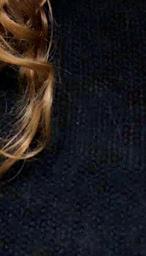































































the undergraduate institution. “Together, they come up with an agreement for a course and curriculum that gives students an experience that they wouldn’t have had otherwise, exposing them to what a research laboratory is all about,” says Hand.
“Unlike most academic courses, it’s a total immersion event. Students get to know what it’s like to be in a real research lab, where things don’t always work out the way you want.”

Students start out by taking basic biology courses at COA, sometimes with guest lecturers from one of the nearby research institutions. That might lead to taking a workshop in molecular genomics during spring break at the MDIBL. Some students are able to do a summer fellowship, allowing them to build on their experiences by joining active research efforts. Similarly, an academic year fellowship builds continuity through the year, supporting students to expand their work into their senior projects at COA.
Of these experiences, laboratory immersion often has the biggest impact on student learning, says Petersen. “It throws students into the deep end of a pool. It teaches them how to ask questions when they don’t know the answer, and it teaches them to then gain independence. They start out being nervous and having horrible imposter syndrome. And then, they start getting more confident.” Alongside fellow biology professor Helen Hess, Petersen oversees the INBRE program at COA, and works with the laboratories to ensure a good fit for students and researchers. Being honest and professional in a research laboratory is as much a part of student learning as gaining technical skills, he says. “A lot of my work is about coaching students how to be open and secure in their insecurity. My mentoring is about helping students feel comfortable enough to say when they are lost, or need help, and then to learn and move forward.”

As a current PhD student in computational biology at Emory University, Harerimana uses statistical methods to understand the genetic intersection of depression and Alzheimer’s disease. Having previous laboratory experience through INBRE, she says, gave her the courage to shift gears—in doing so, she rekindled her passion for math and statistics within the realm of biological research. “My research is about psychiatric and neurodegenerative disorders, while all my work is with numbers and code. But eventually, I’m asking the same fundamental biological questions that a person in the wet lab is asking,” she reflects. “I love data! In a computational biology lab, I’ve found a place where the two are intertwined.”
Harerimana’s trajectory from the mouse lab to the computer lab reflects INBRE’s expansion into bioinformatics: the science of collecting and analyzing complex biological data. “Right now, there’s a huge amount of research going on all over the world,” explains Hand. “Data from that research is out there in the literature, in publications everywhere, in courses and in conferences. Bioinformatics attempts to pull all of that together. For instance, someone may be interested in a particular gene or protein. A bioinformatics project might mine the literature in search of that particular gene or protein and put all that material together online in a database so that another scientist can find it.”
Before knowledge becomes knowledge, what is it? An exploration of the deep; the wreck and not the story of the wreck. Data is not just the stuff of science fiction (although, predictably, the Enterprise’s void turns out to be a trap), but it teaches us that even space voids have stories to tell, and many ways to tell them. More valuable than knowledge, data tells us, is wisdom: what inspires us to venture beyond our depth and face what we don’t know, until we do.
SPRING 2021 | COA mag 59
From left to right: MDIBL poster presentation to highlight student work; Mary Ann Handel, Nadia Harerimana ’18 (center), postdoc Travis Kent at the Jackson Lab; Jeremy “Heath” Fuqua ’19 presenting his poster at the Maine Biological and Medical Sciences Symposium at MDIBL; COA professor Chris Peterson.










Bill Carpenter, now emeritus professor of literature and creative writing, recalls Mel as an invaluable presence in the early days, “because he really knew something about educational experiments and had already thought through many of our innovations. He had the knack of incarnating our dreamy ideas into practical form. What does Shakespeare say? ‘Gives to airy nothing. A local habitation and a name.’”
Mel was magnetic, too. One day in late 1972, 17-year-old Steve Savage ’76 was hitchhiking to Bar Harbor. He’d already been accepted to attend Bates College, but wanted to take another look at COA. As luck would have it, Mel picked him up and, after talking a while, invited Steve to stay at the fixer-upper the Cote’s recently purchased in Hulls Cove—a house now known as Twin Gables. The next day Mel gave Steve a job painting several of the rooms. “He and Polly were so awesome,” Steve remembers, “I stayed a week and decided this was the college for me. The first year I backed the college’s Pinto into a tree. I thought Mel would give me hell, but he just shrugged and said, ‘That’s why we have insurance.’”
Two of Mel’s extracurricular contributions survive today. One is the community garden, where he and Sam Eliot established the first two plots. The other is the college’s outdoor orientation program, one of the first in the nation.
Mel took a break from COA from 19771986, working for five years at Princeton University Princeton Education Center at Blairstown, which provided outdoor education programs for inner city youths, then five more years at New Hampshire’s Notre Dame College.
Mel returned in 1987 to become a much-needed leader in rebuilding the college after the 1983 Kaelber Hall fire. Initially he served as the college’s director of institutional research, funded by our first US Department of Education Title III Strengthening Institutions Program grant, written by Ted Koffman. He subsequently assisted Ted in strategic planning for subsequent Title III grants that funded programs, new faculty, staff, and tech-
nology that were crucial to the young college’s survival and future. As part of the restructuring, COA President Lou Rabineau appointed Mel as administrative dean, overseeing personnel and budgets. He then appointed professor Rich Borden as academic dean, focusing on curriculum planning and management.
Rich recalls, “Our partnership continued for more than a decade until Mel’s retirement. I thoroughly enjoyed working with him. He was a wonderful colleague, a uniquely capable, kind, and creative problem solver. There was another dimension of Mel’s professional life that was especially rewarding for both of us. Shortly after he returned to COA, he became a member of the Society for Human Ecology (SHE). Before long, he rose to be a central figure. Mel and his wife Polly were part of the US delegation to the 1992 International Human Ecology Conference at Gothenburg University in Sweden, where he delivered an address on COA’s newly created MPhil degree program. In 1994, he was elected as SHE’s executive director, moving the organization’s central office from Colorado to Bar Harbor. Between then and his retirement from the college in 1999, he oversaw the planning and supervision of multiple SHE conferences: Michigan State University (1994), Lake Tahoe (1995), COA (1997), and McGill University (1999). Human Ecology Review —SHE’s official, peer-reviewed journal—was also founded under his leadership. The competence and compassion Mel brought to these activities were deeply appreciated by his international colleagues. Many came to the college, where their visit usually culminated in a lively celebration hosted by Mel and Polly.”
Mel is only half of an inseparable equation: Mel + Polly = love + art + friendship + fun. Married in 1961, Mel and Polly and their three sons, Mel Jr., Adam, and Quentin, were an inspirational model for how to savor life and generously, delightedly share its joys. Polly, an artist and COA faculty associate, and the kids filled their homes with beauty: color, flowers, paintings, and animals. Garden vegetables jumped from the earth, coaxed by Mel’s extraordinarily green thumb (and the odd
tablet of sodium nitrate), just as flowers did for Polly. Mel was a superb fisherman, fishing from COA’s cobble beach, from an old red dory or motorized blue skiff, setting out ground lines for flounder from Hulls Cove after the family moved to Twin Gables in 1972, jigging mackerel from the Bar Harbor Town Pier, fishing for trout and bass from a homemade kayak on local lakes and ponds, gigging eels, and gathering clams and mussels at every opportunity. Seafood and vegetables made their way into Polly’s pot, ending up as French country cuisine that stimulated every sense. Faculty meetings often overflowed into spirited and delicious parties at Twin Gables or, later, their home in Hall Quarry. They were the best of hosts.
When Mel retired from COA in 1999, he and Polly moved to Provincetown, Massachusetts, where Polly continued her art career and together they developed a gardening business and volunteered with a number of civic, arts, and environmental organizations. Polly died on December 12, 2017, and Mel two years later on November 27, 2019. They are remembered with warmth and gratitude by students, colleagues, and friends from the COA community and all around the world.
Rich Borden spoke for all of us when he wrote, “It is said the quality of life is measured by the friendships we have made. Mel and Polly Cote brought immeasurable joy to my life. I loved them, love them still, and deeply miss their friendship.”
An obituary for Mel may be found at ellsworthamerican.com/obituary/melvillepeter-cote. A remembrance of Polly Cote written by Helen Caivano was published in the Spring 2018 COA Magazine, pages 56-57, issuu.com/collegeoftheatlantic/docs/ spring_magazine
Steve Katona is a founding faculty member of COA, the first director of COA Allied Whale, and the college’s fourth president, having served from 1993-2006.
Acknowledgments:
Thanks to Rich Borden, Roc Caivano, Bill Carpenter, Millard Dority, Steve Savage ’76, Jill Tabbutt-Henry, and Ted Koffman for their contributions.
SPRING 2021 | COA mag 63
63



situations, but we are presented with these because we can handle them and persist.’”
While all the library ladies loved the students and frequently served as motherly figures, Marcia Dorr stood out for her care, enjoyment of life, child-like joy and playful spirit. Her husband Darrold and their three boys regularly shared their table with COA students. “By being themselves, intelligent, grounded local folks, sharing their childhood stories with me, I learned from them much about the culture and personalities of the region and learned many lessons about social interaction and communication,” says Alexandra Conover Bennett ’77. “They believed in me which of course helped me believe in myself and helped me become the independent person I longed to be.” She adds, “They were such outstanding human beings that were a major fabric of my early life.”
I, too, was one of many privileged students taken under Marcia’s wing. I was fortunate enough to have arrived at COA in the fall of 1987, within weeks of her son, Chris, heading out West. The apparently similarity of our height, boisterous energy, and hair made me a good enough surrogate that she instantly adopted me as one of her large and extended family. “Mumcia’’ or (attempting the heaviest Maine accent I could muster) “Mothah,” was how I regularly addressed her. Like many others in this extended family, Marcia and Darrold’s house was always open and often served as a primary crash pad during in-between-times or visits. It was a home away from home, but it was her love, her warmth, the heart she always wore on her sleeve, that made so many of us feel nurtured and supported.
After 25 years at COA, Marcia announced her plan to retire in 1997. At that graduation she was performing with John Cooper and the chorus. Unbeknownst to her, the So Long song
they had practiced together had been tweaked by the rest of the crew. As she was singing with the chorus, the rest began singing “So Long Marcia Marcia” and at first, she did a double take, looking more closely at her music sheet before starting to look around and realizing they were singing to her. Tears flowed from Marcia (and many others) and she was presented with a COA chair.
That chair remained a prized possession at the new home she and Darrold built in Franklin several years later. Their new, quiet, rural hilltop perch afforded them not only a distant view MDI, but also provided optimal wildlife and bird viewing. Marcia was diagnosed with Alzheimer’s in 2014, but continued to light up with visits from family and friends.
“It’s a bittersweet memory, but mostly sweet for me,” shares former COA president Steve Katona, Marcia’s carpooling mate for decades. He recounted seeing Marcia and Darrold at Ann Peach’s memorial service in 2017. “You never know what someone with Alzheimer’s will be like, but I went up to Marcia as soon as I saw her and she broke into this huge smile and opened her arms and called out ‘Steve!’ and gave me a great big hug adding ‘It is so good to see you!’” Ten minutes later, Darrold came over and told Steve that Marcia wanted to say hi. “I thought, well, I just did, but OK.” As he approached, Marcia again flashed a great big smile, opened her arms and proclaimed “Steve! It is so good to see you!” Steve added, “I think I got at least six or seven more big hugs during the memorial. I can’t help but remember her for her total sweetness, so helpful, and so loyal.”
Marcia passed away in her sleep on November 3, 2020 with Darrold, her loving partner for over 60 years, laying beside her. Audrey, who along with Marcia’s granddaughter, Marion, and daughter-in-law, Amy, had been with
Marcia that last day, adds “Marcia was an angel walking amongst us—now she has her wings.” Plans have not been finalized or scheduled, but Darrold will bury Marcia at a family plot in Town Hill when it is safe for family and friends to gather.
I know many of us who were at COA in its first 30 years can easily conjure the warmth and instant ease of her smile— “pure sunshine” as it has been called by many. Marcia’s curiosity and admiration of others, her generosity, and the support she gave to hundreds of COA students helped open doors, spark relationships, and build bridges between the often disparate worlds of COA and the working people of Maine. Given the turbulent and polarized times we live in, we need more people like Marcia in the world. Like a Zen master / professor emeritus of the social emotional, she demonstrated and modeled kindness, acceptance, appreciation, and fun. Hopefully each of us can channel some of what she taught us so beautifully. We miss you Marcia and please know, we love you “deahly!”
Jeff Miller (or “Jeffy” as Marcia called him), lives in Washington, DC where he shares his love of bicycling and history as the DC Cycling Concierge (no Lobster Bike involved). A 1992 graduate, he still considers being Darron Collins’ resident advisor one of his greatest accomplishments. In addition to those quoted, Jeff wishes to thank Darrold Dorr, Sandra Holmes Modeen, Pancho Cole ’81, Timothea Sutton ’92, Hannah Stevens ’09, Bill Scanga ’92, Don Cass, and Johanna Bernstein ’83 for their time and contributions. He wishes he had more time to connect with even more faculty and alumnx, and invites your stories and photos at jeffreybcmiller@gmail.com. He will compile additional stories to share with Marcia’s family.
SPRING 2021 | COA mag 65
65


Good Food and Food Fights
Monday, July 26 to Friday, July 30, 2021
The College of the Atlantic Summer Institute is a week-long ideas festival that welcomes leaders from around the world to share their expertise and thoughts on the most pressing issues of our time. This year’s theme will be Good Food and Food Fights. During the week, we will explore all aspects of food—production, policy, climate change, food justice, hunger, organics, nutrition, and the joys of eating and cooking.
2021 SPEAKERS INCLUDE:
Michael Pollan
Winona LaDuke
Soledad O’Brien
Dan Barber
Leah Penniman
Sam Sifton
Ruth Reichl
Christopher Kimball
Chellie Pingree
Amber Tamm
Anochi Odinga II
Saru Jayaraman
Susan Rockefeller
David Rockefeller, Jr.
The COA Summer Institute is free and open to the public, but registration is required.
Current Champlain Society members can register starting on May 1 . General registration will open to the public on June 1
Not sure whether your Champlain Society membership is current?
Please email Wes Norton at wnorton@coa.edu or call 207-801-5627.
Want to become a member? Go to coa.edu/tcs
A NOTE ON SUMMER EVENTS:
College of the Atlantic is closely monitoring the COVID-19 pandemic and CDC recommendations for large gatherings. We are hopeful that we will be able to have events in person this upcoming summer, but recognize that there are many unknowns. Regardless of whether we are able to welcome an in-person audience to campus, we will be livestreaming the sessions and are committed to providing a rich virtual experience for the institute. We will communicate details regarding the format as they become available via email and at coa.edu/si.
Learn more online at coa.edu/si
SPRING 2021 | COA mag 67
Follow the Summer Institute on Facebook, Instagram, Twitter, and at coa.edu/si for updates on new speakers as they are announced!
ALUMNX NOTES
2009 As of February 2021, ELENA PIEKUT is back in the COA area after six years in the New Hampshire seacoast/lakes/mountains. She has accepted the position of Ellsworth city planner. For the past five years, she’s been the City of Dover, New Hampshire assistant city planner and zoning administrator. This will be the third time she’s moved to downeast Maine during the month of January… always in January. She writes, “I’m looking forward to reconnecting with the COA community and hopefully partnering with current students in my professional life. It seems like I’m part of a small wave of people moving back or working on finding a way to move back, so that’s exciting!”
2010 NOAH HODGETTS and wife

Sannie welcomed Evelyn “Evie” Robin Hodgetts on June 8, 2020.

Even though 2020 was a tough year for everyone, NAFISA MOHAMMADI and her family took some time and explored parts of the Canadian Rockies, Banff, Lake Louise, and Jasper. A means to escape the realities of the pandemic for a short while and reflect and reconnect.


BECKY WARTELL married Seven Siegel on October 29, 2020 in an exceedingly small legal ceremony in the barn of their new home in Gorham, Maine, which they bought in September. ARWYN SHERMAN ’13 was among the six people present in person (masked and distanced), many others tuned in over Facebook live. The couple plans to have a giant party and do the Jewish ritual wedding stuff once large gatherings become safe again.
2011 ALLI (HICKS) WHEELOCK and her wife Adrianna Wheelock welcomed their first child, Raven James Wheelock, on October 13, 2020. Raven and his three feline siblings are getting along purrfectly.

2012 VIVIAN LAMBERT offers holistic care through energetic alignment, holistic massage, Ayurvedic health consults, homemade herbal products, and workshops through her business, Vivian Rae Wellness. She writes that, “Reopening has gone well in these strange times. Has been lovely to see some COA family again!” Please check out her latest
blog post on Ayurveda, at vivianraewellness. org/post/what-is-ayurveda
JOSE MERLO writes to say that since graduating from COA he has been living back in Quito, Ecuador. Jose notes, “I will be moving to the coastal city of Guayaquil, Ecuador to manage Republica del Cacao (BCorp) collection center, to convert it into a regenerative agricultural experimental center while planting a tropical forest & producing small batches of craft chocolate. If possible, I’m looking forward to working closely with COA 0n exchange programs, and always missing the good old days in Bar Harbor.”
JILL PIEKUT writes, “I graduated from Simmons University with an MS in library and information science in May 2020. As of my graduation, I have a new job as the Patten Free Library archivist & special collections librarian in Bath, Maine. I also got married to Chris Roy in September 2019, so my name has three more letters: Jill Piekut Roy. MATT SHAW ’11 was my best man. We live in Richmond, Maine with our dog, Josie.
2013
MARISSA (ALTMANN) BALFOUR wrote in to say that she “moved full time to Key West in February, 2020, got married in March, and is still working as assistant to the executive director at the Wildlife Friendly Enterprise Network.” She also started a position as biodiversity specialist with Textile Exchange in October.
ANNIE COHEN will be taking on the role of interim director for the small nature camp she used to work at, Burgundy Center for Wildlife Studies, in Capon Bridge, West Virginia. Annie notes she has found out that many COA alums also worked there in the eighties and nineties, so that has been a fun, small-world thing to discover.
MADDY MAGNUSON is one of the three authors of the newly published 2020 edition of Best Practices in STI/HIV and Pregnancy Prevention, the high school sexual health curriculum that is funded by the Maine CDC and Maine DOE. This new edition includes LGBTQ+ inclusive content and activities on affirmative consent. They are also one of the creators of its virtual classroom companion tools for distance and hybrid learning. The curriculum and
From top to bottom: Noah Hodgetts ’10 & wife Sannie welcomed Evelyn “Evie” Robin Hodgetts; Nafisa Mohammadi ’10 ; Becky Wartell ’10 ; Alli Wheelock ’11 & wife Adrianna Wheelock welcomed Raven James Wheelock; Marissa Balfour ’13 in the Keys.
virtual classroom can be accessed for free at the Maine Family Planning website: mainefamilyplanning.org/for-educators/teaching-materials
2016
MARINA CUCUZZA graduated from the University of Maine with dual master’s degrees in marine biology and marine policy. She has been selected as a John A. Knauss Marine Policy Fellow at the National Oceanic and Atmospheric Administration, working with the National Marine Fisheries Service and the Office of Oceanic and Atmospheric Research as a climate and fisheries specialist.
GALEN HECHT writes to say that he now lives in Soldotna, Alaska, and works as stream watch coordinator with Kenai Watershed Forum.

After successfully defending her MFA thesis in poetry at Oregon State University, ELOISE SCHULTZ moved back to MDI to join Mount Desert 365, a nonprofit that supports the long-term economic vitality of the Town of Mount Desert.
ing the business, and promoting and creating workshops, classes, and trainings in the yoga world. He notes, “We are beginning an online Ayurveda training that COA alumnx might be interested in! Check it out here: yogacenteramherst.com/wellness-ambassador-program. ”
In the fall of 2020, KIERA O’BRIEN began her MFA in creative writing at the University of Pittsburgh, where she is a graduate fellow in poetry.

2019
VITORIA BITENCOURT was hired to work with JOHN JACOB ’81 as a curatorial assistant at the Smithsonian after having completed an internship with him. She writes, “For the past year we’ve been working on an exhibition that opens in July. I am including the museum release so you can read about it if you’d like. It has both my name and John’s.” americanart. si.edu/exhibitions/east-baltimore-photographs
HANA KEEGAN has been living and working in London since graduation, and recently wrote this article for The Stage: bit.ly/3iQXlXw

2017
SHLOMIT AUCIELLO has returned to writing the opinion column, “Letter From Away,” which has appeared online and in print since 1992. The essays are published on a bi-weekly basis at knox.villagesoup.com/p/letterfrom-away/1864300. Weekly columns can be found at shlomitauciello.medium.com

2018
RIANNA BROOKS is now a research specialist at the Access to Justice Lab at Harvard Law School. In this role, she manages randomized control trials focused in civil and criminal justice reform.

JENNA FARINEAU moved to Washington, DC in 2019 to start an internship. That move led to a fellowship which, in turn, led to being offered a permanent staff position as digital communications officer at ActionAid USA. She writes, “Here is our statement on the attempted coup—very proud to be working with these folks: actionaidusa.org/news/actionaid-usa-condemnsattempted-coup-at-the-u-s-capitol. (For context: [COA professor] Doreen Stabinsky connected me with ActionAid Senegal while I was a student! I did my second internship with them, so this feels very full circle!)”
HAKIM NOAH has been continuing to run his massage practice and also started a new job as the online studio manager for Yoga Center Amherst. He is in charge of marketing and grow -
Amsel Verlag of Zürich, Switzerland will publish ANĐELA RONČEVIĆ'S artist book that is also her master’s thesis for the MFA in art in public spheres at the Lucerne School of Art and Design, Switzerland. I Will Swim, and My Daughter Will Swim Too , is an illustrated artist book that explores gender equality through swimming. The book comprises 20 oral histories by storytellers from different countries and contexts who tell their experiences with not knowing how to swim. Many of the storytellers are sisters, mothers, and aunts of fellow COA alumnx! The book opens debates on feminism, sociology, politics, ecology, translation, philosophy, and ethics. The book will be available for purchase online in March 2021. Find more information at andelaroncevic.net
2020 REBEKAH HEIKKILA and LIO COOK ’21 became first-time homeowners this past summer when an unanticipated opportunity arose to purchase a beautiful, 120-year-old house on the quietside of MDI. Since becoming quarantine companions at the beginning of the pandemic in the spring of 2020, the two became collaborators on an intentional community project that focuses on shared resources, simple living, and a commitment to lifelong learning. They will be seeking year-round residents for their “homestead-in-progress” starting in June 2021. ■
 From top to bottom: Maddy Magnuson ’13; Marina Cucuzza ’16 ; Hakim Noah ’18; Kiera O’Brien ’18; Anđ ela Ronč ević ’19 ; Rebekah Heikkila ’20 & Lio Cook ’21 are new homeowners!
From top to bottom: Maddy Magnuson ’13; Marina Cucuzza ’16 ; Hakim Noah ’18; Kiera O’Brien ’18; Anđ ela Ronč ević ’19 ; Rebekah Heikkila ’20 & Lio Cook ’21 are new homeowners!
In March, just before the COVID-19 pandemic closed the country, William H. Drury Professor of Ecology and Natural History JOHN ANDERSON traveled to Saint Vincent College at the invitation of Jim Kellam ’96 to give a talk on conservation as part of their bioethics series. In June, a scratch team consisting of Anderson, Ivy Enoch ’18, Hale Morrell ’12, Franklin Jacoby ’12, and David Anderson counted and mapped Great Duck Island’s gull colony to maintain the longterm dataset. In autumn, Anderson served on the Waterbird Society Conference Organizing Committee along with Kate Shlepr ’13 & Jenna Schlener ’19 for the first-ever international Virtual Waterbird Society Meeting. Shlepr and Anderson both presented aspects of their research at the meeting, as did Aya Kumagai ’21 and Hallie Arno ’22. The meeting also featured workshops hosted by Anna Stunkel ’13 and Lindsey Nielsen ’12. Stunkel demonstrated how to draw an eider duck, and Nielsen taught the art of drawing feathers on scratchboard. The workshops were such a success that the Waterbird Council has asked that they be repeated live in Texas next year. In January 2021, Anderson presented a talk on the history of Great Duck to the Harpswell Heritage Land Trust at the invitation of Julia McLeod ’03.
A new short film by NANCY ANDREWS , T.A.Cox Chair in Studio Arts, and Jennifer Reeder called I Like Tomorrow premieres during opening night of The Portland International Film Festival (Portland, Oregon and online), March 5–March 14, 2021. In the film, Captain Regina Lamb, (Michole Briana White) confronts an awkward love triangle with her past, present, and future selves in a lonely space station (live-action, animation, musical).

In the spring of 2020, Joanne Woodward and Paul Newman Chair in Performing Arts JODI BAKER , along with Aimée Miranda ’21 and

Leelou Gordon-Fox ’21, created COArt, an informal online space for sharing COA student art, art processes, and art-related livestream events. Initially the space was simply an effort to help art-focused students complete and show their senior projects (given the temporary closure of the Ethel H. Blum Gallery and our studios). It quickly became clear that COArt could also be of use as a platform for housing and developing all sorts of other creative work. Over fall and winter break, senior staff redesigned and migrated COArt to a new, more practical platform and doubled our work study staff. The site will host a new exhibit as part of its grand reopening in spring 2021 ( COArt2020. org ). In January of 2021, Baker participated in a two-week-long online physical training intensive (Suzuki and Viewpoints) with members of SITI Co. (NYC). The experience was tremendously valuable as a way to investigate and strategize methods for teaching physical theatre practices over Zoom. It was made possible by professional development funds from a Davis Educational Foundation grant.
Like many Americans who are fortunate enough to live near public lands, David Rockefeller Family Chair in Ecosystem Management and Protection KEN CLINE turned to the outdoors to weather the COVID19 storm. “Acadia kept me sane over the past year,” notes Cline, “as I went into the park multiple times every week since March.” This spring and fall, going into the park was also part of Cline’s job as he taught his American Public Lands and Acadia National Park courses with weekly field trips into Acadia. Cline also did research on the National Park Service’s legal response to the pandemic during this time. Finally, it appears that the Trump administration never got around to replacing Cline as the Secretary of the Interior’s appointee to the Acadia National Park Commission. “I had been expecting to lose that appointment since January 2017, but they apparently had bigger fish to fry (or they never read my resume),” Cline says.
COA mag | SPRING 2021 74
COMMUNITY NOTES
KOURTNEY COLLUM , Partridge Chair in Food and Sustainable Agriculture Systems, worked with former grant writer Kristina Swanson to secure a $50k grant from the Stephen & Tabitha King Foundation to fund the MDI Food Access Project, a partnership between COA, COA Beech Hill Farm, Open Table MDI, and the Bar Harbor Food Pantry. This partnership works to deliver fresh produce, dry goods, and prepared foods to areas of Mount Desert Island underserved by local food-security organizations. Kerri Sands ’02 joined Collum as the program manager for the Sustainable Food Systems Research Collaborative, a partnership with UMaine. For the third year, they trained undergraduates in knowledge-to-action research. This summer they supported one UMO fellow and two COA fellows—Sarah Somes ’21 and Lily Gehrenbeck ’21. Somes researched cooperative behavior among maple syrup producers. Gehrenbeck conducted an oral history of Maine beekeepers.
Professor GRAY COX has been quite enjoying the opportunity to not only experiment with teaching online, but to also both organize and present at Zoom workshops with international participation. He has done a series of presentations connected with the Quaker Institute for the Future this year, such as “Community Based Security”(cosponsored with Sequoia Samanvaya), “Artificial Intelligence, Ethics, and Spirituality” (as part of the QIF Summer Research Seminar), “The Pandemic as Portal to the Future” (with Friends Association for Higher Education), and an interview with climate activist Ania Wright ’20 as part of a series on Gandhian approaches to social change through constructive programs and swaraj (sponsored by an NGO in Chennai, India). This work is all part of an effort to further what Cox calls the Slow Zoom movement, modeling mindful ways of producing and digesting digital experiences on the mindful ways of nourishing our bodies developed by the Slow Food movement. He continues to work on a variety of languages, including
clarinet. This summer he was able to gain considerable perspective on the COVID-19 crisis and life by looking at MDI from the point of view of his Zodiac out in Frenchman Bay while stocking up on a winter’s supply of mackerel.

Writing lecturer MARTHA ANDREWS DONOVAN was invited this past fall to serve as a virtual guest speaker for an advanced creative nonfiction course at New England College, where she previously taught as a professor of writing. Donovan’s reading and presentation centered on the intersections of memory, image, and narrative in her hybrid essays, “Dangerous Archaeology: A Daughter’s Search for her Mother (and Others) ~ a memoir in fragments” (with photographer Autumn E. Monsees, Hayden’s Ferry Review, 2012) and “The Changing Light, The Changing Days ~ a memoir in fragments” (The Mud Chronicles, 2018).
Professor DAVE FELDMAN’S book Chaos and Dynamical Systems (Princeton University Press, 2019) has received very positive reviews from the Mathematical Association of America and the American Journal of Physics . He is making slow but steady progress on a textbook on sustainable energy. Feldman is an active member of two community organizations: MDI Racial Justice Collective and MDI Racial Equity Working Group, and he is on the steering committee of Indivisible MDI. He volunteered for State Senator Louis Luchini (D-Hancock) in the 2020 election and served as an election observer for the Maine Democratic Party in Calais and Ellsworth.
In the spring of 2020, JAY FRIEDLANDER, Sharpe-McNally Chair of Green and Socially Responsible Business, presented to senior leaders from colleges and universities around the world at the AshokaU
SPRING 2021 | COA mag 75
Left: Nancy Andrews and Jennifer Reeder’s I Like Tomorrow featuring Michole Briana White. Above: The view enjoyed by Gray Cox, summer 2020.













































































































Sending out heartfelt shouts of gratitude and kudos to the entire COA community for persevering with grace and strength through a year like no other.

Living, working, and studying during the COVID-19 pandemic has been challenging in so many ways; we are grateful to all those who've helped create a safe, successful, productive learning environment.








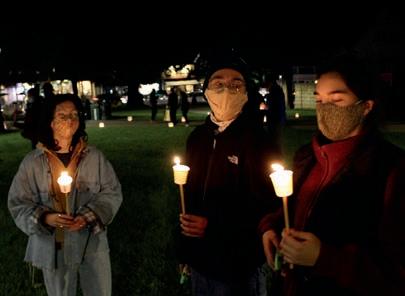



THANK YO U!
 Photo credits: Olivia Paruk ’24, Ben Troutman ’24, Aliya Zweig ’22
Photo credits: Olivia Paruk ’24, Ben Troutman ’24, Aliya Zweig ’22
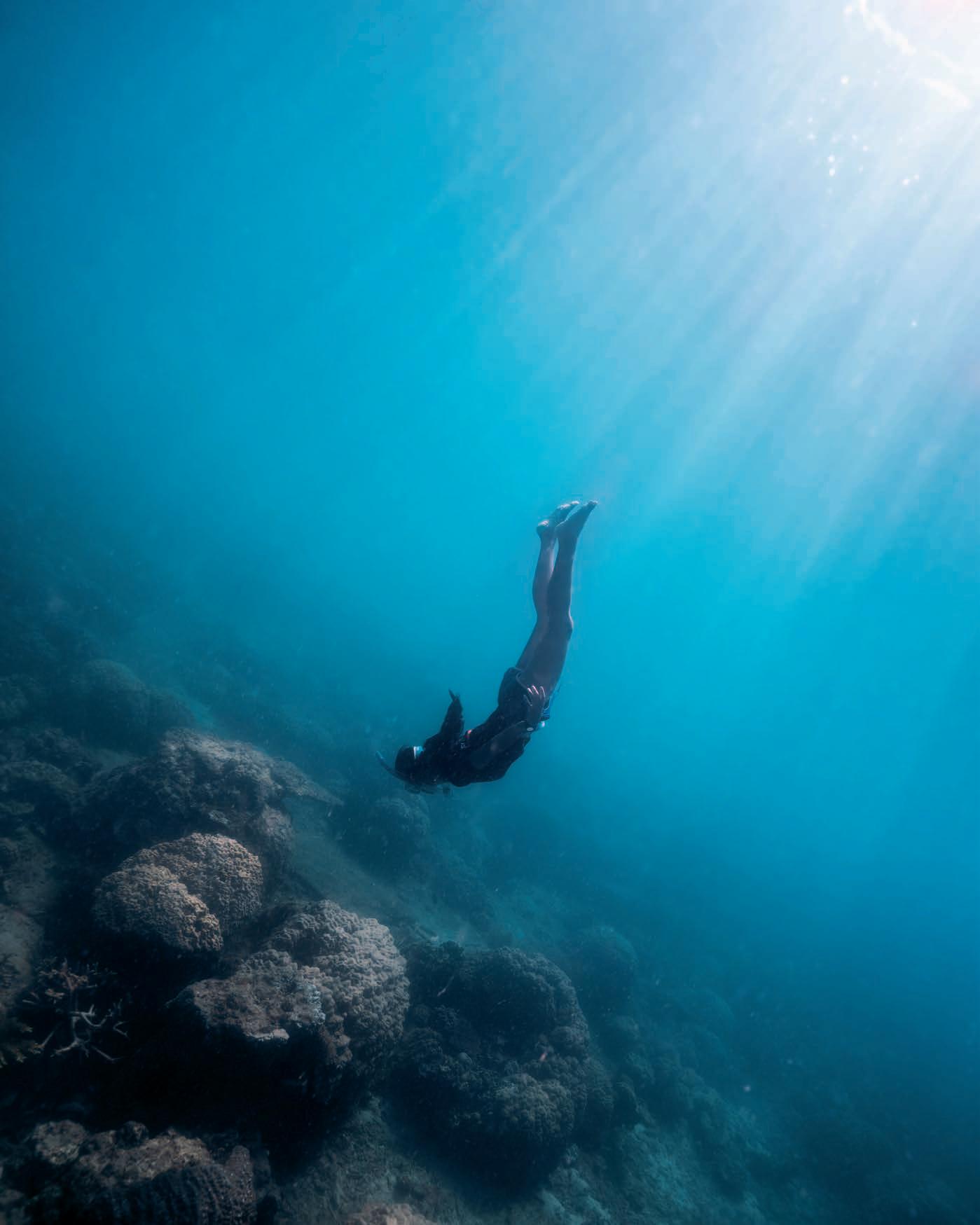







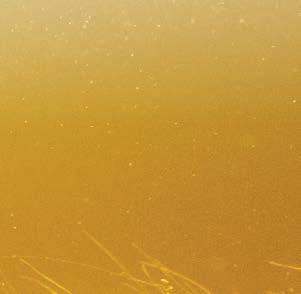
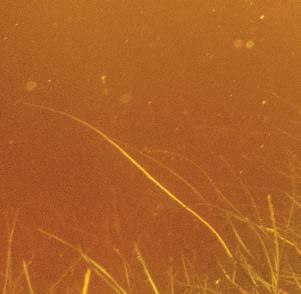
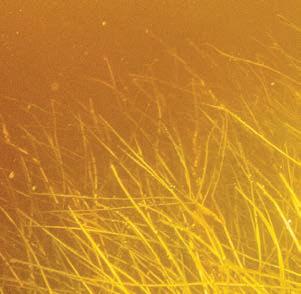

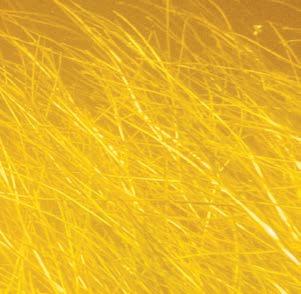
coa.ed u






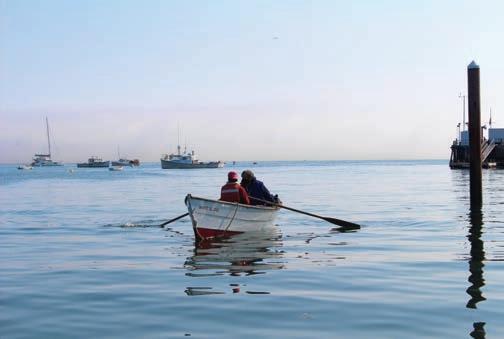
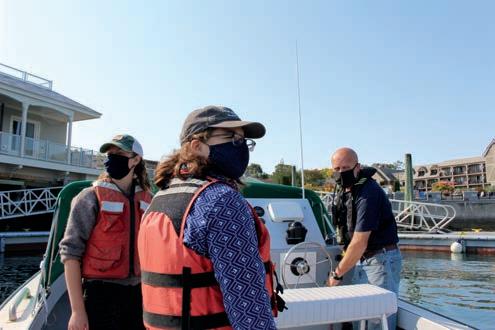



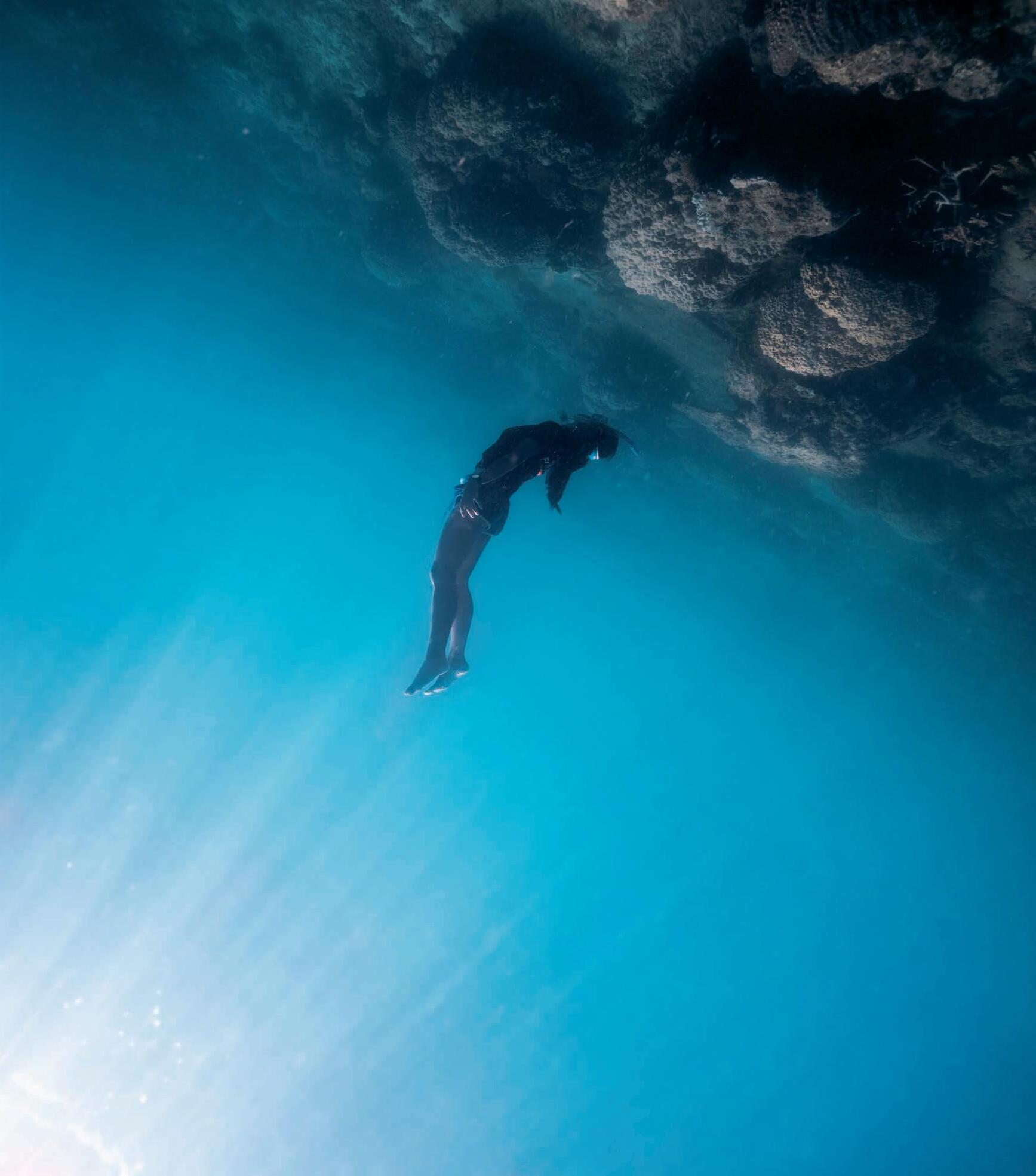



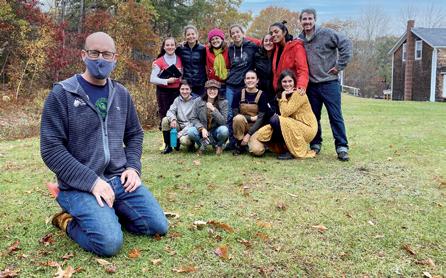



















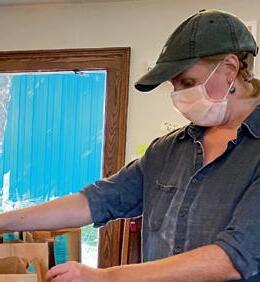


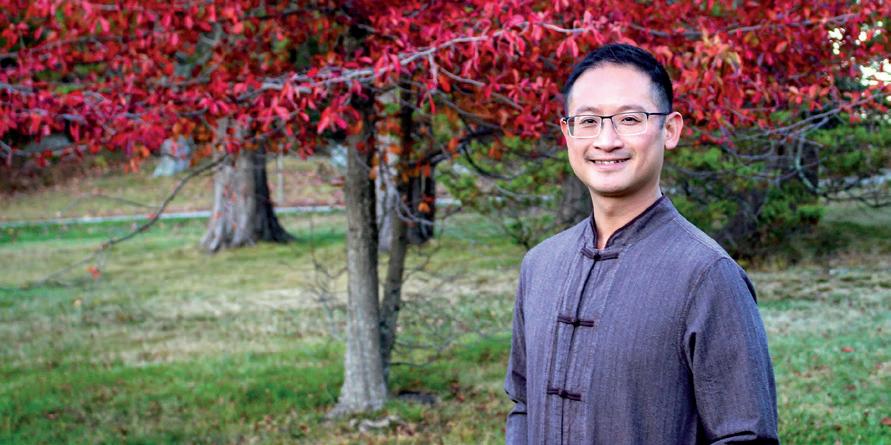






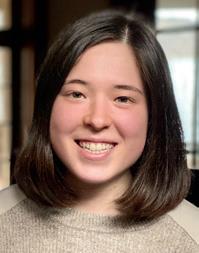
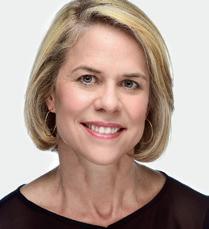
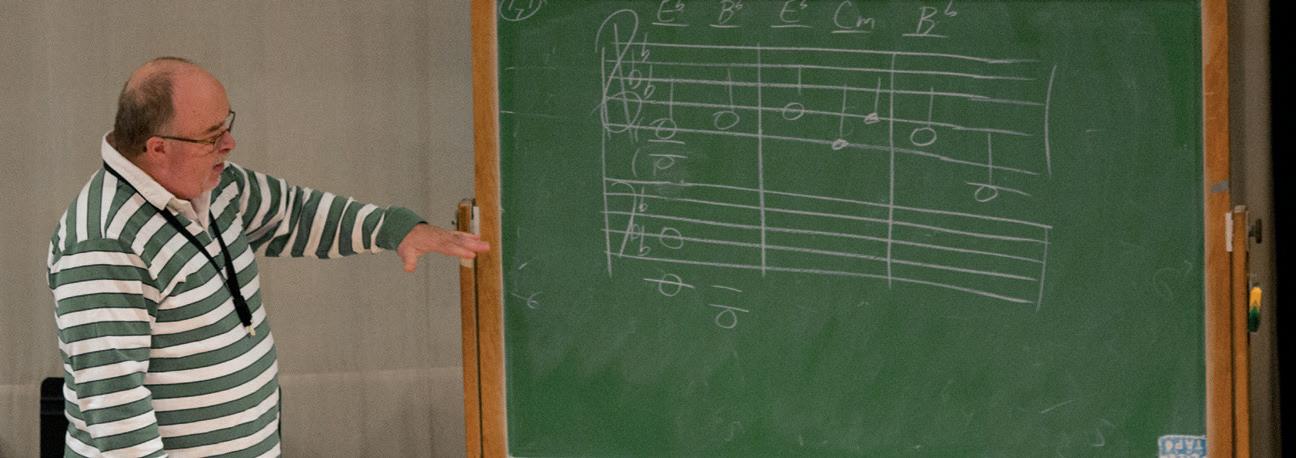

















































































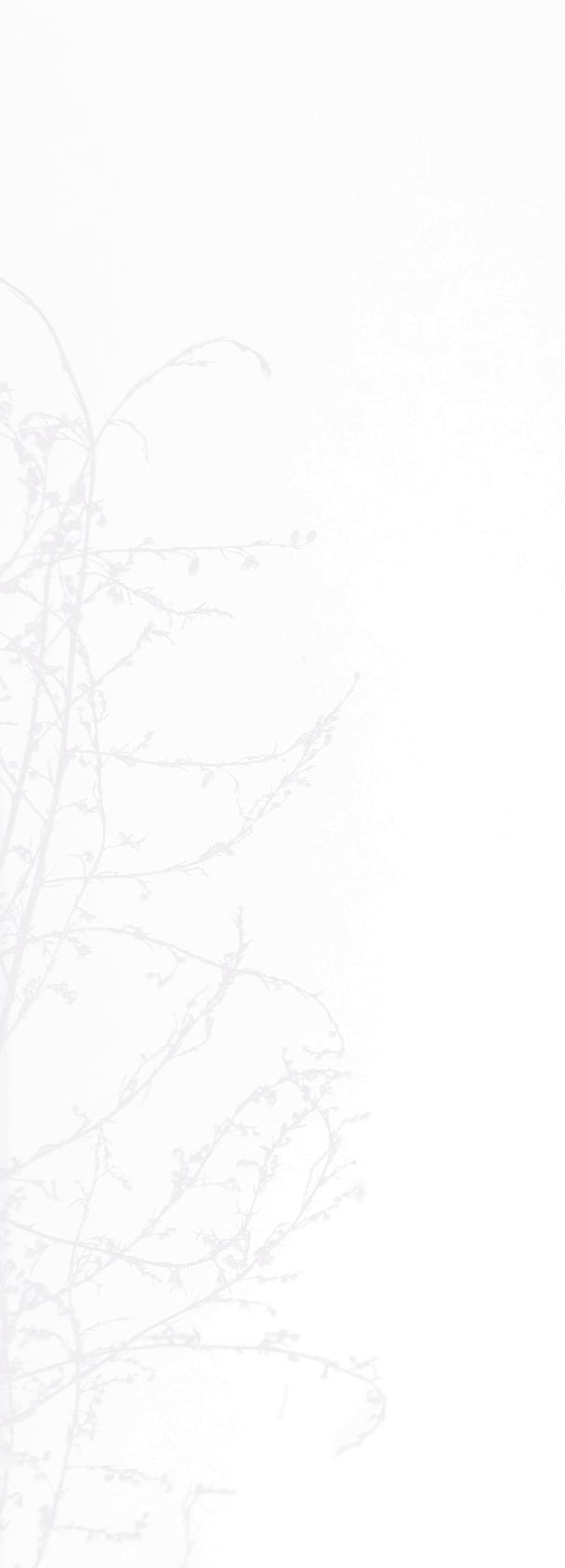













 BY ELOISE SCHULTZ ’16
BY ELOISE SCHULTZ ’16



























































































































































































































































































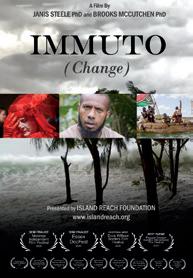

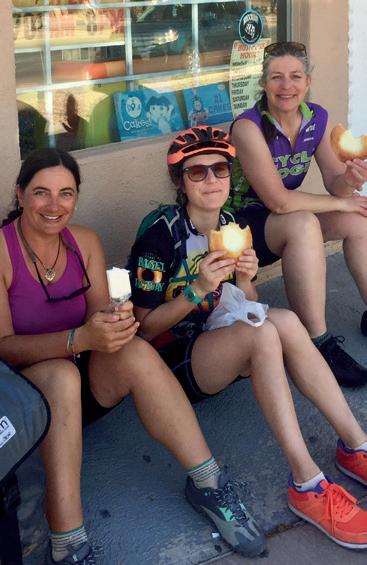

























 From top to bottom: Maddy Magnuson ’13; Marina Cucuzza ’16 ; Hakim Noah ’18; Kiera O’Brien ’18; Anđ ela Ronč ević ’19 ; Rebekah Heikkila ’20 & Lio Cook ’21 are new homeowners!
From top to bottom: Maddy Magnuson ’13; Marina Cucuzza ’16 ; Hakim Noah ’18; Kiera O’Brien ’18; Anđ ela Ronč ević ’19 ; Rebekah Heikkila ’20 & Lio Cook ’21 are new homeowners!



























































